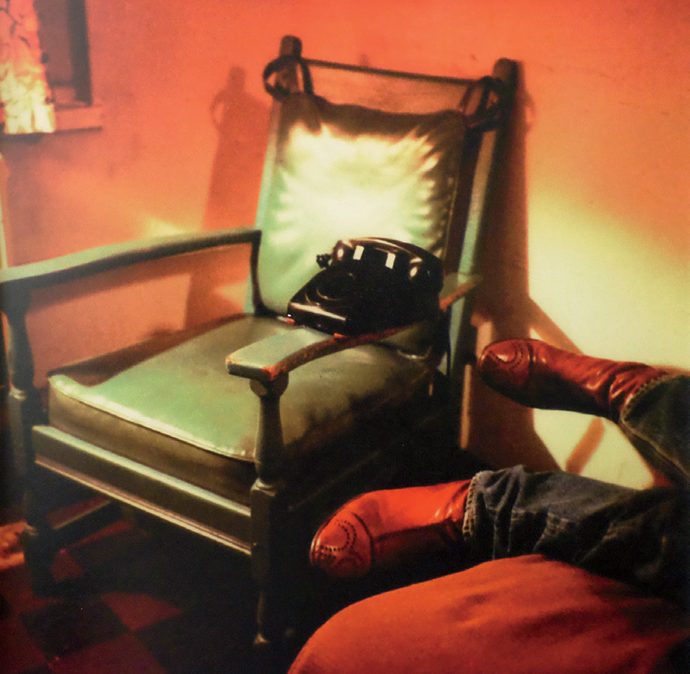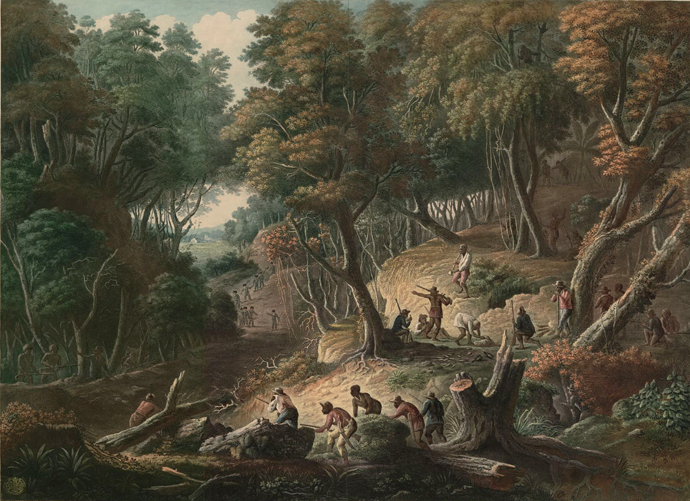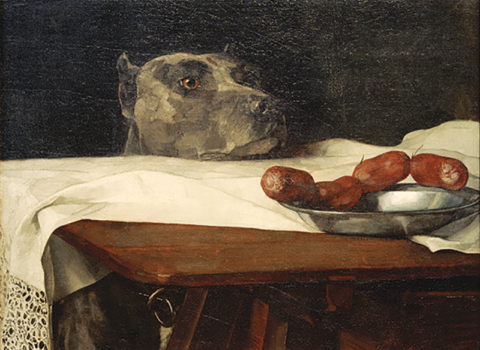Discussed in this essay:
Cleanness, by Garth Greenwell. Farrar, Straus and Giroux. 240 pages. $26.
Tacky’s Revolt: The Story of an Atlantic Slave War, by Vincent Brown. Harvard University Press. 336 pages. $35.
Of Morsels and Marvels, by Maryse Condé. Translated by Richard Philcox. Seagull Books. 324 pages. $27.50.
There’s a lot of crying and cumming in Garth Greenwell’s Cleanness (Farrar, Straus and Giroux, $26), an arresting novel that revolves, title notwithstanding, around the upheaval and mess of desire. Set in Bulgaria, where an expatriate teacher finds himself caught between a strained relationship and the lure of one-off S-and-M hookups, it’s an electrifying portrait of sex’s power to lacerate and liberate, to make and unmake our deepest selves. The book arrives amid a wave of mainstream interest in the erotic lives of gay men, but its frank exploration of kink, loneliness, shame, and dark pleasures hearkens back to a less carefree period—as though to restore a charge of risk and consequence to queer sex in the era of corporate pride and Call Me by Your Name.

A Polaroid by Pierre Keller from his monograph My Colorful Life, published by Edition Patrick Frey. Courtesy the artist and Edition Patrick Frey. Bottom: Photograph from Sofia, Bulgaria © Mihaela Ivanova
What Belongs to You, Greenwell’s 2016 debut, locates that charge in the relationship between an American teacher and a young hustler he meets in the men’s room under Sofia’s National Palace of Culture. A quick suck in the stall leads to an obsessive, manipulative attachment, which begins to erode the boundaries between the narrator’s privileged life and his lover’s desperate circumstances. Cleanness is a variation on the same pattern—both books’ narrators teach English in Sofia, as did Greenwell—but is more self-reflexive in outlook, as concerned with the purpose of passion as with its fulfillment.
The narrator of Cleanness, older and more restless, drifts among irreconcilable roles: mentor to local students; on-and-off boyfriend of R., a closeted man from Portugal; and compulsive if ambivalent partner to fetishists he meets online. The novel itself is divided into three acts. In the center lies the narrator’s relationship with R., which flourishes during an idyllic vacation to Italy but founders back in Bulgaria, where R., struggling with childhood trauma and still tethered to his life in Lisbon, hesitates to put down roots. On either side stand trials of desire in the wilderness, from trysts with strangers to shame-inducing flirtations with attractive male students.
The anchoring tension is between sex’s transformative possibility and the ever-present danger of harm, whether psychic, social, or even that of violence and infection. R. temporarily delivers the narrator from his free-floating lust, as though he “poured a kind of cleanness over everything,” but it’s only a partial reprieve: “even as I lay with R., flooded with love . . . a part [of me] longed to be back here.” In one instance, “back here” means on his knees in the drab apartment of an older Bulgarian he calls gospodar, or “lord,” who derides him as “fat” before whipping him with a cat-o’-nine-tails. The dynamic gives the narrator pleasure before it tips, imperceptibly, into harrowing abuse. He weeps in an alley after making a narrow escape: “I felt with a new fear how little sense of myself I have, how there was no end to what I could want or to the punishment I would seek.”
The book’s sex scenes unfold like revelations, effortlessly braiding inner drama with precisely choreographed intimacy. Greenwell’s long, luxuriously becomma’d sentences, always on the edge of ending, create a tension receptive to the lightest touch: a shift in rhythm, or one clause’s tiny revision of its predecessor, can entirely alter the chemistry of a scene. He melds an incantatory cadence with the catechistic language of porn, which is ridiculous until you’re “lit up with a longing that makes it the most beautiful language in the world.” When the narrator barebacks a submissive Bulgarian partner, relinquishing his fear of disease and first experiencing the thrill of domination, Greenwell writes:
I slapped him then, hard on his ass, and he groaned, Please, he said, his voice electric with need, please, fuck me like your whore, I want to be your faggot whore, and at the sound of it I felt something move in me, like a shifting of gears.
Bulgaria itself provides a less stimulating backdrop. Too often, Greenwell aligns the narrator’s angst with its vaguely sketched political malaise, as though the nation, too, feels trapped between a repressive status quo and libidinal chaos. His relationship with R. flickers out at a kitschy light show near a castle beloved by nationalists, while the assault by gospodar immediately precedes a chapter detailing a 2013 antigovernment demonstration. Like the sex, it begins as a thrilling experiment and ends in tears: a friend of the narrator is beaten by fellow protesters for his sexual orientation. Though this is a wrenching moment, the character and the politics subsequently drop out of the book. Despite his seven years in Bulgaria, the narrator remains a self-conscious interloper, and the scene a perfunctory engagement with circumstances that might have added dimension to Greenwell’s otherwise intimately powerful work.

The Maroons in Ambush on the Dromilly Estate in the Parish of Trelawney, Jamaica, an aquatint by J. Mérigot, based on a painting by Francois Jules Bourgoin. Courtesy the British Library, London
The expatriate novel may set local politics at a distance, but some foreigners profoundly challenge the societies in which they find themselves. In Tacky’s Revolt (Harvard University Press, $35), historian Vincent Brown tells the story of the African soldiers responsible for the eighteenth-century British Empire’s largest slave rebellion. It began in Jamaica in April 1760, when a man named Tacky led a three-week uprising in a rugged northeastern parish. Tacky was a former military leader from the Gold Coast, and Brown argues that his revolt was one phase of a larger plot that spanned the island and reverberated across the region. The roughly one thousand men and women who participated were veterans of West African battlefields and British imperial campaigns, bringing strategic knowledge from the Old World to the New. From their particular strife, Brown derives not only a story of the insurrection, but “a martial geography of Atlantic slavery,” vividly demonstrating how warfare shaped every aspect of bondage.
Slavery itself was war all the way down. Captives lost their freedom to invaders, labored in fortified settlements on turbulent frontiers, and served masters who viewed them as adversaries. Nowhere was this pattern more pronounced than in 1760s Jamaica, “a fabulous commercial entrepôt and a potent military garrison” where slaveholder-officers split their time between plantation management and expeditions to annex French Senegal or sack Spanish Cartagena. Maroons—runaway slaves who established villages in the mountainous interior—patrolled the wilderness, their autonomy secured through a devil’s bargain to enforce their former masters’ rule. The largest ethnic group on the island, the so-called Coromantees, from the Gold Coast, were both coveted and feared by the planter class as natural leaders.
In some cases, military men owned military men. Another rebel commander, Wager, belonged to a British naval captain who named him after—and employed him aboard—the H.M.S. Wager. Like Tacky, Wager was a Coromantee warrior. We know this, incredibly, because a slave agent who had retired to Jamaica recognized Wager as a former business contact from the other side of the Atlantic. There, Brown determines, he might have been a dignitary from one of several warring kingdoms such as Dahomey or Asante, where nearly every man was trained for battle, and hit-and-run fighting in forested terrain was common. Prepared for asymmetric war by their experiences in Africa, soldiers from any of these states would have been “dangerous people to own.”
Brown uses this African background, and his intimate knowledge of Jamaica’s geography, to interpret the rebels’ aims. Reading their maneuvers, he concludes that Tacky’s revolt was a serious attempt to establish “territorial and political control” over Jamaica—a project the book’s transatlantic context makes legible for the first time. The rebellion’s first target was a coastal fort, where Tacky’s forces shot a sentinel and seized a store of armaments. Rather than heading for the safety of the mountains, they marched from plantation to plantation, burning, looting, and recruiting—even pausing to roast an ox on the second night. After a British counterattack, they retreated seaward and occupied a rocky coastal inlet, a “defensible dominion [that] held the promise of communication with the world beyond Jamaica.” Cuba, and Britain’s Spanish enemies, were just across the water.
A maroon mercenary killed Tacky, whose forces subsequently dispersed or died in grisly executions. But aftershocks across the colony suggest that the uprising was intended to have a wider scope. There was another uprising at the naval yard in Port Royal, while Wager’s rebellion struck the western parishes in May. His faction briefly defended a barricaded village against the British, and after its fall, survived nearly a year of guerrilla combat. Meanwhile, authorities discovered strange conspiracies among the enslaved: a black woman enthroned at secret meetings as the Queen of Kingston, a “sword of state” more than a meter long with a velvet hilt, mourners smuggling firearms in a coffin.
For Brown, the reluctance among military historians to “acknowledge slave revolt as an act of war” is part of a long tradition of erasing resistance from below. Opposing this tendency, Brown finds “fugitive territories” and “countermappings” that didn’t move borders but profoundly altered the Jamaican and imperial landscapes. Tacky’s revolt might have been brief, but it did help scare the British into abolishing the slave trade. It also illuminates an archipelago of uprisings that struck Suriname, St. John, Antigua, and New York in the same period, all led by Coromantees. Most of all, the revolt lived on as a model of resistance in Jamaica. Forty years after Tacky’s defeat, new arrivals from Africa were still hearing about the daring rebels who upended the island and—according to the eighteenth-century slaveholding historian Bryan Edwards—drank rum spiked with their masters’ blood.

Photograph by Valery Rizzo
Cuisine requires a dash of rebel élan, and few have it in greater abundance than the Guadeloupean writer Maryse Condé. Among the Francophone Caribbean’s greatest living novelists, and regularly considered a contender for the Nobel Prize in Literature, Condé is renowned for historical fiction that spans the African diaspora, focusing on lives that link its several parts. Her masterpiece, Segu, an epic of the Bambara Empire, extends from Malian royal courts to Brazilian plantations, while I, Tituba imagines the life of the enslaved Bajan woman who bedeviled colonial Salem. Her writing was transatlantic before the concept was in vogue, and her remarkably international career has involved long residences in Guadeloupe, Ghana, Guinea, and France, as well as on both coasts of the United States. Along the way, she’s purloined recipes from professors, revolutionaries, restaurateurs, and, in one instance, the sultan of Yogyakarta, who appeared to her in a dream.
Translated by her husband, Richard Philcox, whom she affectionately ribs throughout, Condé’s Of Morsels and Marvels (Seagull Books, $27.50) is a lightheartedly grand and gossipy memoir in meals. The genre might seem insubstantial fare for a writer of Condé’s stature, and she knows it, slyly opening with her publisher’s pearl-clutching refusal to consider the book of recipes she initially proposed. It’s an easy segue from there to her girlhood experiments in the kitchen. Defying a mother who believed that “only stupid people like to cook”—and whose own mother, the subject of Condé’s biographical novel Victoire, spent her life cooking for a family of white Creoles—she began adulterating recipes at an early age, mixing cinnamon with curry or aged rum with coconut flan. She brings the same transgressive spirit to the book’s mélange of cooking and literature, which “boils down to mixing sheep with goats, jute with silk”: an “enduring crime of treason.”
The book is more travelogue than gastronomic treatise. Condé writes of leaving the lychee and black pudding of Guadeloupe for the boiled vegetables of the Parisian pension where she lived while studying at the Sorbonne. She compares the variants of mafé—a Malian dish of meat, peanut paste, and tomato sauce—at homes and in restaurants across West Africa, where she led a peripatetic life after divorcing her first husband in Guinea. She recounts moving to America, where she learns Jewish and Mexican recipes from academic colleagues but initially dislikes soul food: a synecdoche for her constantly frustrated attempts to integrate herself into African-American cultural life. The later chapters detail trips occasioned by literary and cultural conferences, of which Condé seems to have attended every one on earth.
Some dishes arrive like long-lost relations. After striking up a friendship with the wife of a North African dignitary in Paris, Condé flies to visit her in Tunisia and eats tagine, a stew that mixes fruit and meat in a way she’d previously considered to be her own shameful eccentricity. Other meals make new homelands more bearable. At Thanksgiving in the United States, she substitutes goose marinated in orange juice and rum for “boiled cardboard” turkey. Still others signal the vanishing of old ways: after teaching an elaborate class on Guadeloupean “ethno-cuisine” in Paris, she moves back home to find everyone on the island eating Margherita pizza. Even her relatives no longer have time for traditional food. After she stages a kitchen intervention at her brother’s house, her sister-in-law all but evicts her—but not before decreeing a list of culinary taboos, including a prohibition on mixing sweet and savory flavors.
“Cooking does not lend itself to politeness or pretence,” Condé writes. “Whatever the palate doesn’t like the throat cannot swallow or the stomach digest.” She might as well be describing her own sensibility. The book’s great pleasure is how frankly Condé, a one-woman dinner party, holds forth on everywhere she’s been and everyone she’s met, a roster that includes Japanese academics, future African presidents, and even Mother Teresa, who hands Condé a business card in the Calcutta airport. There’s plenty of dishing throughout: Angela Davis misunderstood I, Tituba; the Calabash Literary Festival is mediocre.
Cuisine becomes a model for the intuitive allergies and affinities that govern interpersonal relations—and indeed, for the cosmopolitan writer, tasked with adapting the tastiest morsels from every milieu. Just as she flouts the rules of “traditional dishes whose unchanging recipes seem to come from sacred texts,” Condé the writer advocates for what she calls “literary cannibalism,” after a model for postcolonial literature inspired by the Brazilian poet Oswald de Andrade. His 1924 manifesto praised the Tupi Indians who devoured the “noble parts” of Portuguese missionaries—an invitation, Condé writes, for colonized artists to digest only the most nutritious values of the West.









































































































